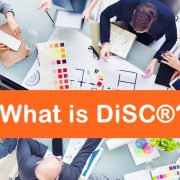Leadership Characteristics That Build Character
What do solid leadership characteristics and traits look like? They look like the solid leader, metaphorically reflecting his or her anatomy.

Starting at the top, a real leader not only has a head for business; she has an open and optimistic mind that’s willing to explore ideas from anyone on her staff– no matter how far down they may be on the food chain.
She has eyes that recognize a worker’s strengths and she will attempt to create a work environment in which these strengths can flourish. She’ll also scrutinize weaknesses in the hope of supporting that worker’s efforts to improve through professional development courses, computer technology classes, and any other tools necessary to make them better at their job. A mature, effective, and humane leader will see beyond the company’s bottom line and will, therefore, welcome the opportunity to invest in an employee’s personal fulfillment
A leader with good listening skills will have ears to hear the whole message their underling attempts to convey, even if it’s a message of discontent. Among the most important leadership characteristics, listening is a virtue and a skill. It requires patience as well as compassion. And it demands tenacious focus. Why tenacious? Let’s be honest here. Who among us can easily filter out the inner voice that rehearses a response or rebuttal even before hearing the opposing argument?
Tenacious focus means that you hear the other person’s voice more clearly than the one in your head. And it suspends your own arguments–defensive and offensive–so that you hear what they say as well as what they really mean.
Leading with your heart doesn’t mean having a “bleeding” heart. It is not a sign of weakness. Rather it’s a sign of tremendous strength. A leader who is comfortable in his own skin won’t make his staff jump out of theirs. He will risk appearing human and humane because that’s what he is–human and fallible. His acceptance of other people’s faults and foibles will not put the company at risk. On the contrary, it will inspire loyalty among his workers and the zeal to improve–and that will benefit the company.
A good leader may put his foot down, but it won’t land on the necks of his employees. A solid leader takes a solid stance on issues that matter, but will remain flexible about how he and his team should reach certain goals.
The anatomy of a powerful leader with healthy leadership characteristics is such that it builds character in both the superiors and subordinates. And as such, a corporation–no matter how small or large–can only thrive.













